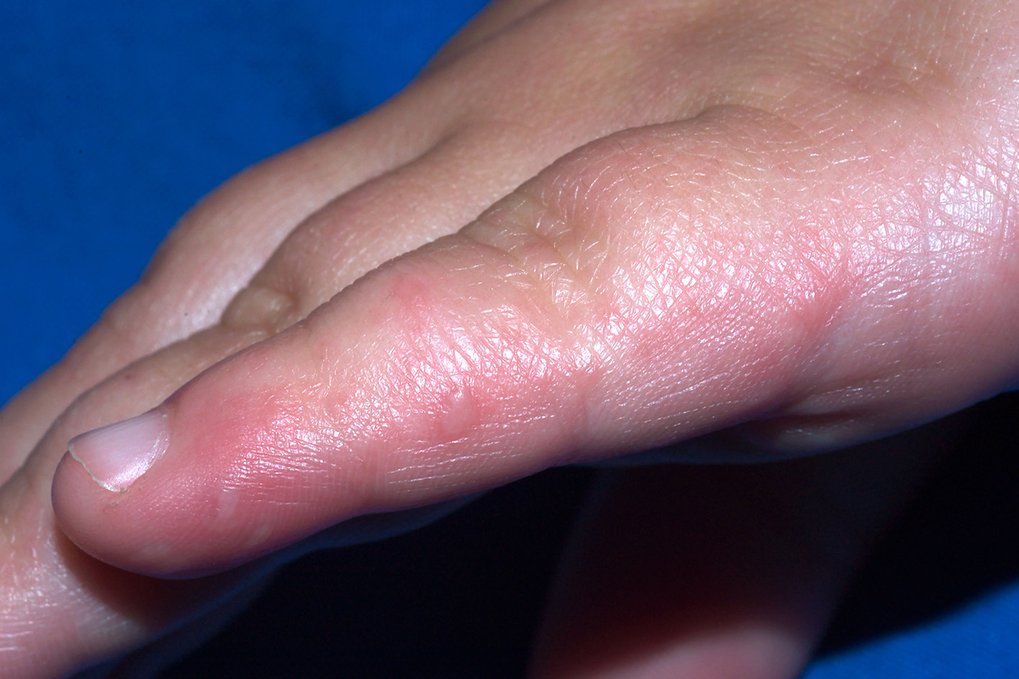Hand, foot and mouth disease
Hand, foot and mouth disease is a common childhood illness that can affect adults. It usually clears up by itself in 7 to 10 days.
Check if it's hand, foot and mouth disease
The first signs of hand, foot and mouth disease can be:
- a sore throat
- a high temperature, above 38C
- not wanting to eat
After a few days mouth ulcers and a rash will appear.

Ulcers appear in the mouth and on the tongue. These can be painful and make it difficult to eat or drink


The symptoms are usually the same in adults and children, but they can be much worse in adults.
It's possible to get hand, foot and mouth disease more than once.
If you're not sure it's hand, foot and mouth disease
Look at other childhood rashes.
Information:
Hand, foot and mouth disease has nothing to do with foot and mouth disease that affects farm animals.
How to treat hand, foot and mouth disease yourself
You can't take antibiotics or medicines to cure hand, foot and mouth disease – it has to run its course. It usually gets better in 7 to 10 days.
To help with the symptoms:
- drink fluids to prevent dehydration – avoid acidic drinks such as fruit juice
- eat soft foods like soup – avoid hot and spicy foods
- take paracetamol or ibuprofen to help ease a sore mouth or throat
A pharmacist can help with hand, foot and mouth disease
Speak to your pharmacist for advice about treatments, such as mouth ulcer gels, sprays and mouthwashes to relieve pain.
They can tell you which ones are suitable for children.
See your GP if:
- your symptoms don't improve after 7 to 10 days
- you or your child has a very high temperature, or feels hot and shivery
- you're worried about your child's symptoms
- your child is dehydrated – they're not peeing as often as usual
- you're pregnant and get hand, foot and mouth disease
Hand, foot and mouth disease is infectious. Check with your GP surgery before going. They may suggest a phone consultation.
How to stop hand, foot and mouth disease spreading
Hand, foot and mouth disease is easily passed on to other people. It's spread in coughs, sneezes and poo.
You're infectious from a few days before you have any symptoms, but you're most likely to give it to others in the first 5 days after symptoms start.
To reduce the risk of spreading hand, foot and mouth disease:
- wash your hands often with warm soapy water – and teach children to do so
- use tissues to trap germs when you cough or sneeze
- bin used tissues as quickly as possible
- don't share towels or household items – like cups or cutlery
- wash soiled bedding and clothing on a hot wash
Staying off school or nursery
Keep your child off school or nursery while they are feeling unwell.
But as soon as they're feeling better, they can go back to school or nursery. There's no need to wait until all the blisters have healed. Keeping your child off for longer is unlikely to stop the illness spreading.
Hand, foot and mouth disease in pregnancy
Although there's normally no risk to the pregnancy or baby, it's best to avoid close contact with anyone who has hand, foot and mouth disease.
This is because:
- having a high temperature during the first 3 months of pregnancy can lead to miscarriage, although this is very rare
- getting hand, foot and mouth disease shortly before birth can mean the baby is born with a mild version of it
Speak to your GP or midwife if you have been in contact with someone with hand, foot and mouth disease.
Page last reviewed: 10/01/2018
Next review due: 10/01/2021
Call NHS 111 Wales
If you can't speak to your GP and don't know what to do next.




